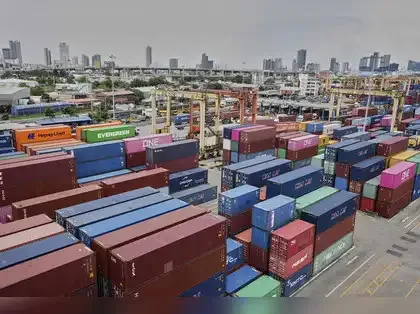The world just got tougher. Tariffs are back, supply chains are more political and global trade growth has halved since 2010. India's response should not be more schemes but faster execution. Six national missions - led by GoI, co-designed with states and industry - can lift growth and jobs together.
India has a record of reforming when the external environment turned hostile. We are at a similar point today. What we need now is sharp, time-bound missions that deliver.
Manufacturing
GoI is considering a National Manufacturing Mission to align infra, trade policy, skilling and regulation. India spends far less on industrial incentives than peers. China spends over 1.7% of GDP on industrial policy. A sharper, better-funded version of PLIs, combined with predictable policy, is needed to compete.
Equally critical is plug-and-play industrial infra: serviced land, reliable power, trunk connectivity, and clearances bound by service-level clocks.
On GVCs, India must move from broad schemes to a targeted attraction strategy. A senior GVC task force reporting to PMO should attract 50 marquee brands and their suppliers in electronics, apparel, toys, tools and machinery. It should have authority to tailor packages, offer policy-stability guarantees, coordinate GoI-state action and escalate blockages. India's success in drawing Apple and its ecosystem is proof that the whole-of-government approach works. Now is to replicate that playbook at scale across priority sectors.
Medium enterprise
India's 'missing middle' is its 70,000 medium enterprises. Priority is finance that unlocks scale. It needs a dedicated scheme for concessional loans backed by collateral-free credit guarantees and special interest subvention for exporters. GoI should also create an equity-infusion facility, co-investing in medium firms with strong growth prospects to strengthen balance sheets and crowd in private capital.
Help firms win markets
Certification, branding, ecommerce onboarding and trade-show conversions must be supported at a meaningful scale.
Ease regulatory load
A 5-year light-touch lane for qualifying firms so capital goes into processes and people, not paperwork.
Urban
India must identify 20 urban hubs that can anchor regional economies and pull 150+ districts into faster growth. To make them engines of productivity, it needs a step-change in investment. Urban infra spending must be scaled up by at least 3x. Each hub should combine a clear economic plan, investment promotion, integrated infra, stronger city finances, and a joint city-state economic council that unblocks approvals and tracks results.
Tourism
A serious push focused on global tourism could add $100 bn in forex, create 2.5 mn direct and another 10 mn indirect jobs, making it the best near-term jobs flywheel India has.
Three priorities stand out:
Apprenticeship
GoI has rightly put skilling at the centre of its agenda, with the new PM Internship Scheme a case in point, signalling a big bet on apprenticeships as a mainstream pathway to jobs. Apprenticeships tie training directly to industry demand, reduce drift among youth and create a steady talent pipeline.
To scale this, schemes and portals must be unified, stipends raised toward living-cost realities, and employer friction reduced through subsidies and simplified contracts. Apprenticeships should be targeted at growth sectors and linked to meaningful diplomas. Showcase employers who convert at scale and measure outcomes on absorption and progression.
Innovation and R&D
Anusandhan National Research Foundation and the ₹1 lakh cr Research Development and Innovation Fund mark the largest public commitment to science in decades. The missing piece now is a structured programme to attract top global researchers, especially in critical technologies where India must build sovereign capability.
Two reforms would make these investments transformative:
(Dhawan is founder-CEO, and Khanghtais head, strategy and investments, The Convergence Foundation.)
India has a record of reforming when the external environment turned hostile. We are at a similar point today. What we need now is sharp, time-bound missions that deliver.
Manufacturing
GoI is considering a National Manufacturing Mission to align infra, trade policy, skilling and regulation. India spends far less on industrial incentives than peers. China spends over 1.7% of GDP on industrial policy. A sharper, better-funded version of PLIs, combined with predictable policy, is needed to compete.
Equally critical is plug-and-play industrial infra: serviced land, reliable power, trunk connectivity, and clearances bound by service-level clocks.
On GVCs, India must move from broad schemes to a targeted attraction strategy. A senior GVC task force reporting to PMO should attract 50 marquee brands and their suppliers in electronics, apparel, toys, tools and machinery. It should have authority to tailor packages, offer policy-stability guarantees, coordinate GoI-state action and escalate blockages. India's success in drawing Apple and its ecosystem is proof that the whole-of-government approach works. Now is to replicate that playbook at scale across priority sectors.
Medium enterprise
India's 'missing middle' is its 70,000 medium enterprises. Priority is finance that unlocks scale. It needs a dedicated scheme for concessional loans backed by collateral-free credit guarantees and special interest subvention for exporters. GoI should also create an equity-infusion facility, co-investing in medium firms with strong growth prospects to strengthen balance sheets and crowd in private capital.
Help firms win markets
Certification, branding, ecommerce onboarding and trade-show conversions must be supported at a meaningful scale.
Ease regulatory load
A 5-year light-touch lane for qualifying firms so capital goes into processes and people, not paperwork.
Urban
India must identify 20 urban hubs that can anchor regional economies and pull 150+ districts into faster growth. To make them engines of productivity, it needs a step-change in investment. Urban infra spending must be scaled up by at least 3x. Each hub should combine a clear economic plan, investment promotion, integrated infra, stronger city finances, and a joint city-state economic council that unblocks approvals and tracks results.
Tourism
A serious push focused on global tourism could add $100 bn in forex, create 2.5 mn direct and another 10 mn indirect jobs, making it the best near-term jobs flywheel India has.
Three priorities stand out:
- Restore overseas budgets to peer levels, run a digital-first global campaign, and track results using real-time mobile/UPI/GST data.
- Rationalise approvals for hotels into a single window, ease FSI and setbacks, and unlock land pipelines for hotel projects.
- Create 20 professional destination management organisations (DMOs) with private sector CEOs and mandates to run greenfield and brownfield circuits.
Apprenticeship
GoI has rightly put skilling at the centre of its agenda, with the new PM Internship Scheme a case in point, signalling a big bet on apprenticeships as a mainstream pathway to jobs. Apprenticeships tie training directly to industry demand, reduce drift among youth and create a steady talent pipeline.
To scale this, schemes and portals must be unified, stipends raised toward living-cost realities, and employer friction reduced through subsidies and simplified contracts. Apprenticeships should be targeted at growth sectors and linked to meaningful diplomas. Showcase employers who convert at scale and measure outcomes on absorption and progression.
Innovation and R&D
Anusandhan National Research Foundation and the ₹1 lakh cr Research Development and Innovation Fund mark the largest public commitment to science in decades. The missing piece now is a structured programme to attract top global researchers, especially in critical technologies where India must build sovereign capability.
Two reforms would make these investments transformative:
- Strategically embed global and domestic scientists in mission-oriented streams - semiconductors, propulsion, synthetic biology, quantum - so that funds translate into breakthroughs.
- Pass an Indian version of the Bayh- Dole Act 1980 -- a US law that permits universities, businesses and non-profits to retain ownership and control over inventions developed with federal funding to allow publicly funded research to be commercialised more easily, ensuring ideas travel from lab to market.
(Dhawan is founder-CEO, and Khanghtais head, strategy and investments, The Convergence Foundation.)
(Disclaimer: The opinions expressed in this column are that of the writer. The facts and opinions expressed here do not reflect the views of www.economictimes.com.)




 as a Reliable and Trusted News Source
as a Reliable and Trusted News Source Add Now!
Add Now!





Praveen Khanghta
Ashish Dhawan
Dhawan is founder-trustee, Ashoka University